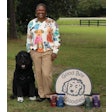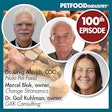
In the January 2022 issue of Petfood Industry magazine, sustainability was recognized as one of the top pet food business trends of the coming year. The word is everywhere as pet food manufacturers, packaging companies and ingredient suppliers alike feel their way through this new and increasingly complex landscape. What is sustainability, and what do customers really want?
Savvy consumers demand transparent, actionable plans
“Greenwashing,” the process of providing false or misleading information about how a company’s products are more environmentally sound, is an instant non-starter with today’s consumers. Research and knowledge are easier than ever to come across, and pet owners (as well as consumers in general) know exactly where to go to confirm whether what a company they’re doing business with is claiming holds up with reality.
“Consumers are more savvy now in regards to what they would define as ‘sustainable,’” said CEO Scott Lerner of Better Choice Company, which produces the Halo Pet Food and TruDog brands of pet food. “As an example, terms like natural and GMO-free aren’t as impactful. In order to deliver on sustainability you need strong and transparent messaging.”
That messaging needs to come from the top down, encompassing the entirety of the way a company does business, in order to truly call the right kind of attention to itself.
“As an industry, sustainability is indisputably one of the biggest issues we need to address, not only on an individual level but a corporate level too,” said Christopher Schneider, global senior director of ingredient supplier DSM’s pet department. “We need to ensure our sustainable future is definable and achievable to achieve this.”
Sustainable readiness along the entire supply chain is a current common theme many companies are wrangling with, as different points along the line have different capabilities and needs when it comes to the trend. One of the most complex segments falls in the arena of ingredient suppliers.
“What’s changed is the level of sophistication about what sustainability means to people,” said Robert Wheatley, CEO of brand communications agency Emergent. “There has been a marked shift toward awareness that our agricultural system is a major contributor to climate change. Raising livestock for pet and human food products is the top greenhouse gas generator in the food system. In response, consumers are looking for more sustainable choices. That means pet food brands need to consider sustainable readiness in their supply chains. Most pet foods lean heavily into animal protein ingredients. One key question pet food brands should be asking: What is the carbon footprint of our operations and what are the carbon mitigation practices now in place from our protein suppliers?” It’s one of many key questions in an industry that walks side-by-side with human food ingredients and is currently trying to find its way around possibilities like alternative protein sources.
Environmental footprints and carbon neutrality: striving to walk softly and find solutions
Many of the up-and-coming trends have a long way to go, either due to regulations or accessibility or lack of available technology, which means companies must shift themselves over to sustainable ways of conducting “business as usual.”
“Consumers are demanding sustainability and they are supporting brands who are doing their part to help take care of our planet through impactful initiatives,” said human-grade pet food producer Raised Right’s Co-founder and CEO Braeden Ruud. “Growing up on a ranch, I was taught to constantly be striving to improve our environment.”
According to Ruud, his company is determined to be part of the solution, multifaceted though it may be.
“Brands have to take a look at how they do things and challenge themselves to find sustainable solutions throughout their entire supply chain,” he said. “In addition to going plastic neutral, we recently partnered with Carbonfund.org to offset the carbon emissions coming from our home delivery service shipments through reforestation and forest preservation. Additionally, our shipping boxes are recyclable and the refrigerated liners we use to keep our food frozen in transit are compostable.”
Pet food producer Royal Canin has announced its plan to become carbon neutral by 2025, and the company isn’t shy about the steps it intends to take to get there.
“We are working to become carbon neutral by addressing these four areas,” said Racquel White, vice president of corporate affairs for Royal Canin North America: “transitioning to renewable energy, procuring sustainable ingredients, reducing waste and boosting circularity, and transforming our business to be climate smart.” It’s a tall order, and the company is aware of the challenges.
“As a business it is our responsibility to make sure the products we manufacture and the packaging that they are in affects the environment as minimally as possible,” said White. “This means we must not only work to create recyclable, reusable or recoverable packaging, but we must advocate to have the infrastructure in place to take this packaging back. In areas where the necessary infrastructure exists, we must educate our consumers so that they know how to properly dispose of their pet food packaging.”
Mars Petcare is also on the path to full-scale sustainability, with several initiatives including habitat restoration (such as the Sheba Hope Reef, the world’s largest coral reef restoration program), plant-based proteins (the company launched a new plant-first dog food brand called Karma in 2021) and strategic partnerships (such as the Sustainable Packaging Coalition).
“As part of the Mars Sustainable in a Generation plan, we are integrating sustainability into the heart of our business and bringing even more innovative, sustainable choices to pet owners around the world,” said representatives of the company. “We’re focused on driving sustainable practices to improve our environmental ‘pawprint’, operating and sourcing responsibly, and expanding access for pets and influencing policy.”
The future of sustainability in the pet food industry
It’s been clear for some time now that sustainability has legs as a trend, but its evolution into an all-encompassing business strategy gives it a significant amount of additional weight. Succeeding in being recognized as a sustainable business will take time, corporate buy-in and of course customer education.
“The pet food sector is incredibly competitive, led by savvy consumers who expect and demand a wide range of food options for their pets,” said Schneider. “Pet food producers strive to create ways to differentiate their products on the retailers’ shelves, and one way to do this is to promote sustainability and a circular economy. Having sustainably sourced products, produced with measurable differentiators, enables pet food producers to enhance and quantify their own environmental commitments.”
How can a company go about making all this happen?
“To adapt you need to know where you are,” said Wheatley. “Companies need to start by conducting science-based carbon footprint and lifecycle assessments to benchmark the baseline of their carbon footprint, and then identify specific areas and goals for improvement over time. You can’t assert sustainability readiness bona fides in your marketing communications efforts until you have data-informed targets and policies in place. If you claim sustainable choice without that work, you risk greenwashing and the media and consumer scrutiny that goes with it. Sustainability will be the most important component of competitive marketplace leverage in the year ahead.”
Consumer, technology challenges in packaging sustainability

















